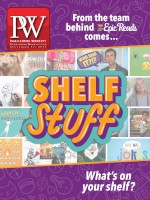The connections that booksellers form with middle grade readers are deep and lasting. “The avid readers are so much fun,” says Elisa Thomas of Cellar Door Books in Riverside, Calif. “I love the kids who come in, tell me what they just read, and ask me for something that I didn’t think they’d like.”
Cultivating those relationships can be more difficult, especially in first-time interactions between booksellers, readers, and their parents. “You have to sell to both parent and reader,” says Nicole Brinkley at Oblong Books in Rhinebeck, N.Y. “If the parent doesn’t like it, they won’t pay for it, and if the reader doesn’t like it, they won’t touch it again once they leave the store.”
Given these unique difficulties, we asked booksellers to share their many years of experience for fellow booksellers who want to foster a love of reading in middle graders.
1. Listen deeply to readers and their parents.
“We expect our booksellers to ask the right questions about favorite or most recently read books, and then to really hear what the child and the accompanying adult say,” says Margaret Brennan Neville at the King’s English in Salt Lake City. “I believe it is very important to ask the adult straight out about their comfort level with content, this includes language, sex, drugs, and rock & roll, and violence. In the kids’ section, adults are usually paying so we are selling to two—sometimes different—audiences. I believe that it is vital to long-term relationships to make sure that the child knows that we are listening to them, too. So: eye contact, asking questions about interests besides books, finding something in common. We often suggest that kids and adults read the book together. Nothing like a conversation about a book.”
2. Don’t box yourself in.
“My most avid middle grade readers are obsessed with fantasy books,” Brinkley says. “But they’re always willing to try outside of their favorite genres and find new things. There are a few specific kiddos I’m thinking of whose passion and enthusiasm for books is incredibly refreshing, and whose honesty with the material they’re reading inspire me every day for the future. They remind me that I shouldn’t box myself into just my favorite categories, which helps me find new favorites across the store.”
3. Have shelf talkers from staff and young readers community.
Mary Ruthless of Foggy Pine Books in Boone, N.C., says, “We have shelf talkers written by kids in our community, and that really makes an impact when showing books to kids. Knowing that other kids in their community have enjoyed the book makes both kids and parents more likely to buy a book.”
4. Read, read, read.
“Being well read in the new releases helps so much,” Ruthless says. “I can’t tell you how much easier it is to sell a hardcover that I’m gushing about than one where all I can say is that the reviews are good and other customers have liked it.”
5. Have a quick pitch.
“Practice a one-sentence pitch,” Brinkley at Oblong Books advises booksellers. “Kids and parents both have short attention spans and, sometimes, not much time to sell, so knowing what you want to say and how to say it can convince them to buy a book more than excited rambling can.”
Through hundreds and even thousands of interactions with middle grade readers, booksellers have a granular sense of what works and what doesn’t in middle grade books. They shared their insights in specific tips that publishers can bear in mind when bringing books to market.
1. Heavy-handedness doesn’t sell.
As Ruthless points out, “Books that seem to be obviously teaching a lesson don’t resonate well with my kid readers. They don’t like to be beaten over the head with a point.”
And, Brinkley adds, “Kids hate books that preach to them. Anything overly didactic is a no.”
2. Come see us.
According to Neville, “One of the most memorable things a publisher did was come to Salt Lake City and actually spend the day with me, some of my staff, other bookstores’ staff. We had a daylong discussion about some of these very subjects. Anything publishers can do to make eye contact, have a conversation, and follow through is good.”
3. Go easy on the diversity checklists.
“I am so excited as a POC bookseller to see so many new, young POC authors putting out books with main characters that represent more different people,” says Thomas at Cellar Door Books. “It was something I really wanted to see more of as a kid, and I’m so glad to see it happening for these upcoming kids. However, I would love it if publishers stopped marketing things as the ‘insert diverse thing here’ Harry Potter.”
4. Pay more attention to the oldest and youngest middle grade readers.
“Some kids are thirsty for hefty books, but just a glance at the spine width can mean a skip for others,” says Bethany Strout at Tattered Cover in Denver. “I’d like to see more true young middle grade. Not all eight-year-olds are ready for 300-page books, or even for books about 11-year-olds.”
Neville adds, “An area that has been neglected is the section for older kids who are not good readers. There is so much demand for this sector.”
5. Costs matter now more than ever.
As Ruthless puts it, “I would like to see more books that have simultaneous hardcover/paperback printing so that the books are available to lower income families on release. I would like to see less of publishers keeping a book in hardcover for over a year. This can help make books more accessible for low-income readers.”



 Volume 265
Issue 38
09/17/2018
Volume 265
Issue 38
09/17/2018





